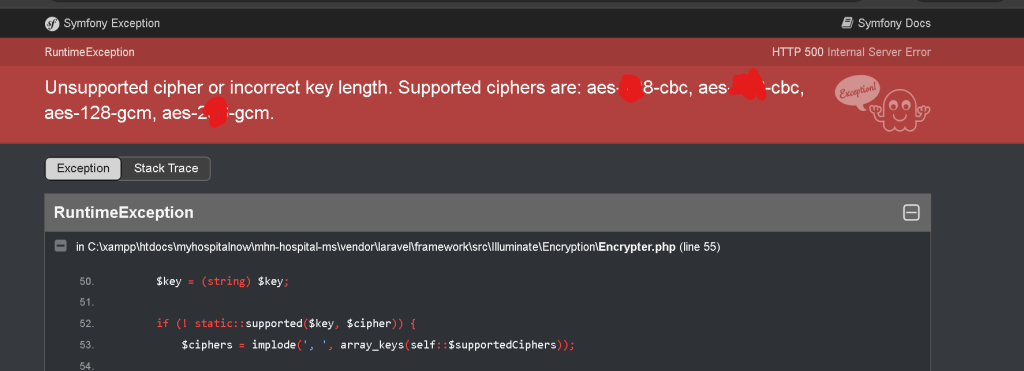
Laravel, known for its elegance and simplicity, occasionally throws unexpected errors that may leave developers scratching their heads. One such issue is the RuntimeException with an HTTP 500 Internal Server Error, accompanied by a message indicating “Unsupported cipher or incorrect key length.” This error usually occurs due to misconfigurations related to the application key.
This error points to an inconsistency in the cipher or key length used for encryption in Laravel. It highlights that the application is trying to use an unsupported cipher or that the provided key length is incorrect.
To resolve the RuntimeException with the “Unsupported cipher or incorrect key length” error in Laravel, follow these steps:
Generate a New Application Key:
Run the following command to generate a new application key. Ensure that you are in the root directory of your Laravel project:
php artisan key:generate
This command generates a new application key, and Laravel will use the correct ciphers and key length.
Clear the configuration cache to apply the changes. Run these commands in your terminal:
php artisan config:clear
php artisan config:cache
This ensures that Laravel picks up the updated configuration files, including the new application key.
Open your .env file and verify that the APP_KEY line looks correct. Sometimes, running key:generate multiple times may introduce errors. Ensure that there is only one base64= key in the APP_KEY line:
APP_KEY=base64:YourGeneratedKeyHere